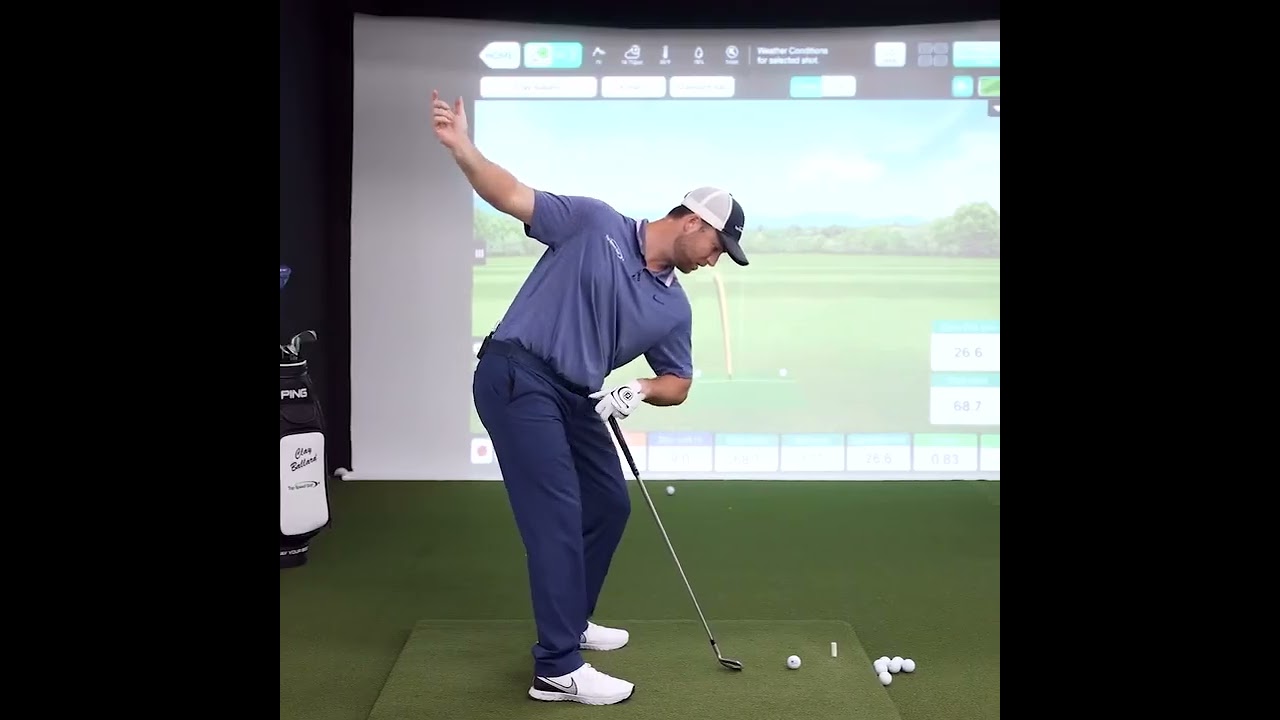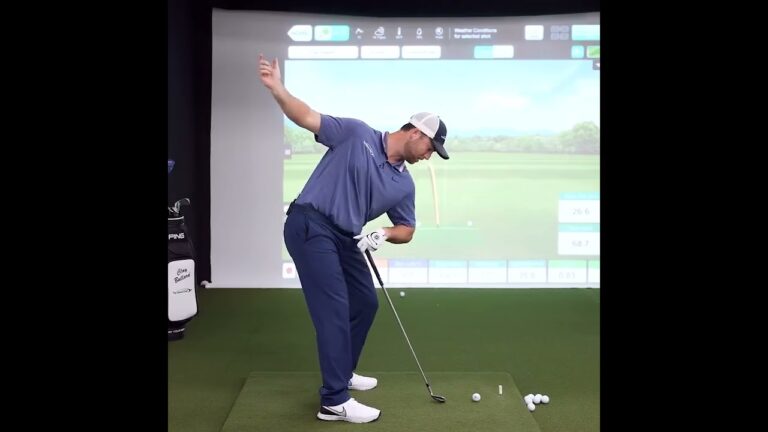
Discover a simple yet powerful technique to maintain your posture during the golf downswing and achieve consistent, solid ball strikes. In this guide, inspired by Top Speed Golf’s Clay Ballard, you’ll learn how a single cue can transform your game.
Have you ever struggled with standing up out of your posture during the downswing, resulting in inconsistent shots? In this blog post, I’ll walk you through a straightforward move to help you maintain your posture and improve your ball striking. Using insights from a Top Speed Golf video, I’ll guide you through mastering this approach to see fewer thin shots, improved shaft lean, and a more penetrating ball flight.
Recognize Why You Stand Up Out of Your Golf Posture
The first step in fixing the standing-up fault is diagnosing its cause. When you stand up during the downswing, your hips move forward, your spine straightens, and you lose the ability to compress the ball. Result? Inconsistent contact and poor ball flight. Some signs of standing up include:
- Your torso becomes more vertical at impact.
- Your hands fall behind the ball.
- The divot starts behind the ball.
- Inconsistent, weak ball flight.
Utilize the Shirt-Button Cue to Maintain Posture
One actionable cue is to feel your shirt buttons covering the golf ball during the downswing. Imagine a laser pointing from your shirt buttons to the ground over the ball. This mental image helps maintain your posture and prevents back movement.
Here’s why it works:
- Moves your chest forward while keeping your hands leading.
- Increases shaft lean, improving compression and consistency.
- Prevents spine straightening, maintaining posture.
Create Golf Shaft Lean and Reduce Dynamic Loft
Forward shaft lean enhances impact quality. Pros often present significantly less dynamic loft than their club provides due to forward shaft lean. This results in a lower, piercing ball flight and better compression.
Implementation Steps:
- Begin from a balanced address. Hips slightly tilted, knees flexed.
- Keep your chest moving forward and down on the downswing.
- Allow your rear to move back to create space for hands.
- Ensure your chest rolls over the ball, with hands ahead of the clubhead.
Drill the Move and Measure Results
Drill A — Slow-Motion Shirt-Button Drill
Stand without a ball, practice slow swings, focusing on chest and rear movement. Do this before swinging normally, noting the change in feel.
Drill B — Impact Bag or Headcover Drill
Use an impact bag or headcover to rehearse the correct position. Ensure hands lead and chest covers the bag.
Drill C — Ball and Divot Check
Check for divots starting in front of the ball. Track metrics like dynamic loft and carry distance for improvement.
Troubleshooting and Fine-Tuning
- Feeling tall at impact? Focus on rear movement to create forward space.
- Burying the club? Avoid excessive shaft lean; find balance.
- Too low ball flight? Adjust shaft lean for desired trajectory.
- Club inconsistency? Vary shaft lean by club for balance.
Practical Tip: The 30% Rule for Dynamic Loft
Consider this: Pros deliver about 30% less effective loft than the club’s loft. For a 6-iron with 30 degrees, optimal dynamic loft should be near 21 degrees, enhancing compression and distance.
What is the single most important feel to stop standing up in the golf downswing?
Visualize your shirt buttons covering the ball, maintaining a laser point to the ground. This encourages forward shaft lean, preventing torso straightening.
How does keeping your chest over the ball affect dynamic loft and ball flight?
Chest over ball allows hands to lead, creating shaft lean that reduces dynamic loft. This results in a penetrating flight with more consistency.
Will this make my golf shots too low?
If shots are too low, slightly reduce forward shaft lean. The goal is efficient trajectory and compression.
Can I use this with wedges and short irons?
Yes, but with adjusted shaft lean. Maintain posture and ensure hands lead slightly for clean contact and spin.
How do I practice if I don’t have a launch monitor?
Rely on ball flight, divot positions, and feel. Use simple tools for feedback.
How long does it take to groove this in?
Improvements in contact and feel can occur within short sessions, but full adaptation may take weeks of practice.
Conclusion
This shirt-button cue offers a straightforward path to enhance your downswing mechanics. With deliberate practice, start achieving better compression and consistency in your iron play by maintaining posture and creating forward shaft lean. Begin practicing today and transform your golf game efficiently.


0 Comments